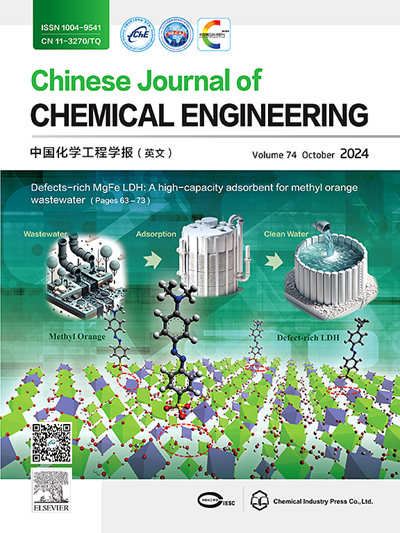Numerical studies on rib and channel designs considering interfacial contact resistance
IF 3.7
3区 工程技术
Q2 ENGINEERING, CHEMICAL
引用次数: 0
Abstract
The mass transport and ohmic losses in proton exchange membrane fuel cells (PEMFCs) is significantly influenced by the channel to rib width ratio (CRWR), particularly when accounting for the interfacial contact resistance between bipolar plates (BPs) and gas diffusion layers (GDLs) (ICRBP-GDL). Both the determination of the optimal CRWR value and the development of an efficient flow field structure are significantly influenced by ICRBP-GDLs. To investigate this, three-dimensional numerical models were developed, revealing that selecting an optimal CRWR tailored to specific ICRBP-GDL values can effectively balance mass transport and ohmic losses. Building on this insight, a novel island two-dimensional flow field design is proposed, demonstrating the ability to enhance oxygen transport to the catalyst layer (CL) and achieve a more uniform oxygen distribution without increasing ohmic losses. Compared to conventional straight and serpentine flow fields, the island flow field improves output power density by 4.5% and 3.5%, respectively, while reducing the liquid water coverage ratio by 30%. Additionally, the study identifies optimal CRWR values for conventional flow fields corresponding to ICRBP-GDLs of 2.5, 5, 10, 20, and 40 mΩ·cm2 as 1.5, 1.5, 1.0, 0.67, and 0.43, respectively. For the island flow field, the optimal CRWRs are consistently smaller—1.5, 1.0, 0.67, 0.43, and 0.43—due to its superior mass transfer capability. This work provides a valuable framework for optimizing flow field designs to achieve improved PEMFC performance.

考虑界面接触阻力的肋和通道设计的数值研究
质子交换膜燃料电池(pemfc)的质量传递和欧姆损失受到通道与肋宽比(CRWR)的显著影响,特别是当考虑到双极板(bp)和气体扩散层(gdl)之间的界面接触电阻(ICRBP-GDL)时。ICRBP-GDLs对最佳CRWR值的确定和高效流场结构的形成都有显著影响。为了研究这一点,开发了三维数值模型,揭示了根据特定ICRBP-GDL值选择最佳CRWR可以有效地平衡质量输运和欧姆损失。在此基础上,提出了一种新颖的岛状二维流场设计,证明了在不增加欧姆损失的情况下,能够增强氧向催化剂层(CL)的传输,并实现更均匀的氧分布。与传统的直流场和蛇流场相比,岛状流场的输出功率密度分别提高了4.5%和3.5%,而液态水覆盖率降低了30%。此外,研究还确定了ICRBP-GDLs为2.5、5、10、20和40 mΩ·cm2时,常规流场的最佳CRWR分别为1.5、1.5、1.0、0.67和0.43。对于岛屿流场,由于其优越的传质能力,最佳crwr始终较小,分别为1.5、1.0、0.67、0.43和0.43。这项工作为优化流场设计提供了一个有价值的框架,以提高PEMFC的性能。
本文章由计算机程序翻译,如有差异,请以英文原文为准。
求助全文
约1分钟内获得全文
求助全文
来源期刊

Chinese Journal of Chemical Engineering
工程技术-工程:化工
CiteScore
6.60
自引率
5.30%
发文量
4309
审稿时长
31 days
期刊介绍:
The Chinese Journal of Chemical Engineering (Monthly, started in 1982) is the official journal of the Chemical Industry and Engineering Society of China and published by the Chemical Industry Press Co. Ltd. The aim of the journal is to develop the international exchange of scientific and technical information in the field of chemical engineering. It publishes original research papers that cover the major advancements and achievements in chemical engineering in China as well as some articles from overseas contributors.
The topics of journal include chemical engineering, chemical technology, biochemical engineering, energy and environmental engineering and other relevant fields. Papers are published on the basis of their relevance to theoretical research, practical application or potential uses in the industry as Research Papers, Communications, Reviews and Perspectives. Prominent domestic and overseas chemical experts and scholars have been invited to form an International Advisory Board and the Editorial Committee. It enjoys recognition among Chinese academia and industry as a reliable source of information of what is going on in chemical engineering research, both domestic and abroad.
 求助内容:
求助内容: 应助结果提醒方式:
应助结果提醒方式:


